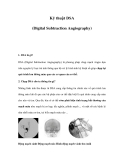
Bệnh viện Trung ương Huế
34 Journal of Clinical Medicine - Hue Central Hospital - Volume 17, number 2 - 2025
Effectiveness of intra - arterial nimodipine on central retinal artery occlusion
Received: 0/10/2024. Revised: 12/02/2025. Accepted: 15/3/2025.
Corresponding author: Le Nguyen Ngoc Minh. Email: drminhle95@gmail.com. Phone: 0987129473
DOI: 10.38103/jcmhch.17.2.5 Case report
EFFECTIVENESS OF INTRA-ARTERIAL NIMODIPINE ON CENTRAL RETINAL
ARTERY OCCLUSION
Le Nguyen Ngoc Minh1, Le Vu Huynh1, Duong Dang Hoa1, Duong Anh Quan2
1Department of ..., Stroke Center - Hue Central Hospital, Viet Nam
2Department of ..., Ophthalmology Center - Hue Central Hospital, Viet Nam
ABSTRACT
Background: Central Retinal Artery Occlusion (CRAO) is a rare but severe ophthalmic emergency characterized
by sudden, painless vision loss. Standard treatments often have limited success. This study explores the use of intra-
arterial nimodipine as a potential treatment for CRAO.
Case report: We present a case series of three patients diagnosed with CRAO at Hue Central Hospital. All patients
had visual acuity of 1/10 and failed to respond to standard treatments including ocular massage, anterior chamber
paracentesis, and hyperbaric oxygen therapy. Intra-arterial nimodipine (20 mg) was administered via the internal carotid
artery. Visual acuity was assessed at baseline, immediately after treatment, at 3 days, and 1 month post-treatment.
Digital Subtraction Angiography (DSA) images were obtained before and after treatment. All three patients showed
immediate improvement in visual acuity following intra-arterial nimodipine treatment, with increases to 4/10 or 5/10.
These improvements were sustained at 3 days and 1 month follow-up. DSA images demonstrated notable vasodilation
with improved blood flow to the retinal arteries and posterior ciliary artery. The procedure was well-tolerated, with only
mild and transient side effects reported.
Conclusion: Intra-arterial nimodipine shows promise as a treatment for CRAO, demonstrating significant
improvements in visual acuity even after the failure of standard treatments. However, larger, controlled studies with
longer follow-up periods are necessary to confirm its efficacy and safety before it can be considered as a standard
treatment option.
Keywords: Central Retinal Artery Occlusion, intra-arterial nimodipine, visual acuity, vasodilator, case report.
I. BACKGROUND
Central Retinal Artery Occlusion (CRAO) is a
rare but severe ophthalmic emergency characterized
by sudden, painless vision loss due to blockage of the
central retinal artery. This condition leads to retinal
ischemia and, if left untreated, can result in permanent
vision loss [1, 2]. CRAO is often likened to a “stroke
of the eye” due to the similarity in its abrupt onset and
the ischemic nature of the damage [3, 4].
The incidence of CRAO is approximately 1.9
per 100,000 individuals annually in the United
States, with a higher prevalence in older adults,
particularly those over 80 years of age [2, 5]. Risk
factors for CRAO include hypertension, diabetes,
hyperlipidemia, and smoking, highlighting its
association with systemic vascular diseases [6].
The condition is more common in men and is often
indicative of underlying atherosclerosis, serving as
a potential marker for ischemic heart disease and
cerebral stroke [7].
The pathophysiology of CRAO involves the
sudden blockage of the central retinal artery, which
causes ischemia primarily in the inner retinal layers
[8, 9]. In some cases, the presence of a cilioretinal
artery can help preserve central vision by providing
alternate blood flow [10]. However, without prompt
intervention to restore blood flow, permanent vision
loss can occur within hours.

























